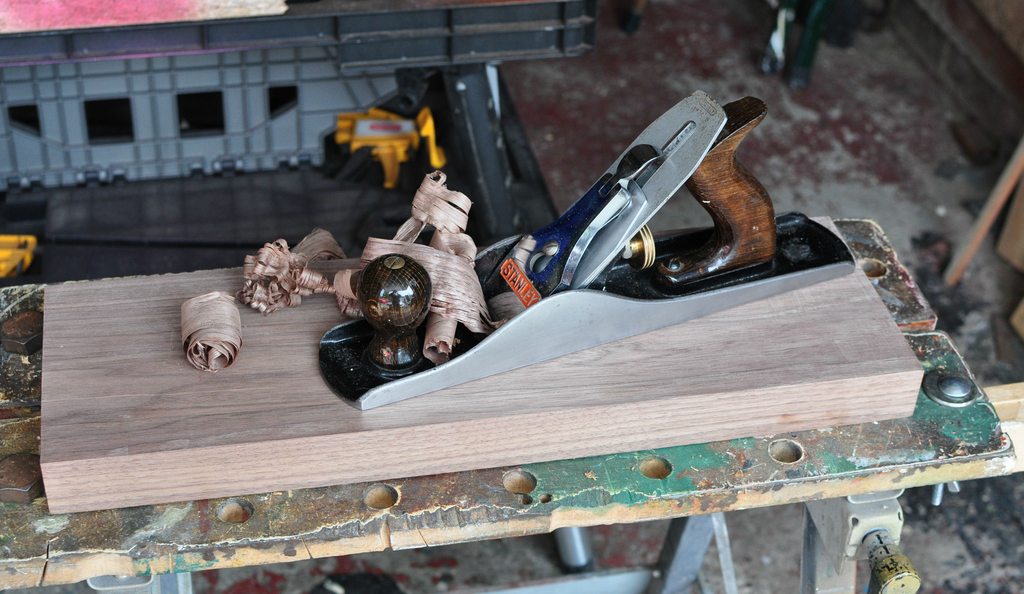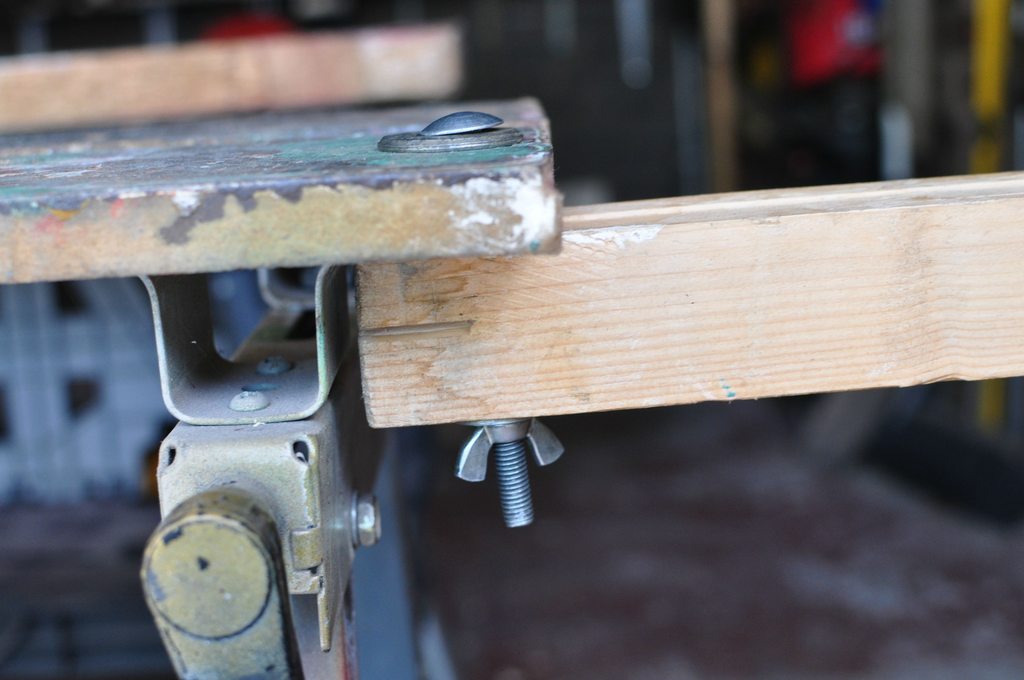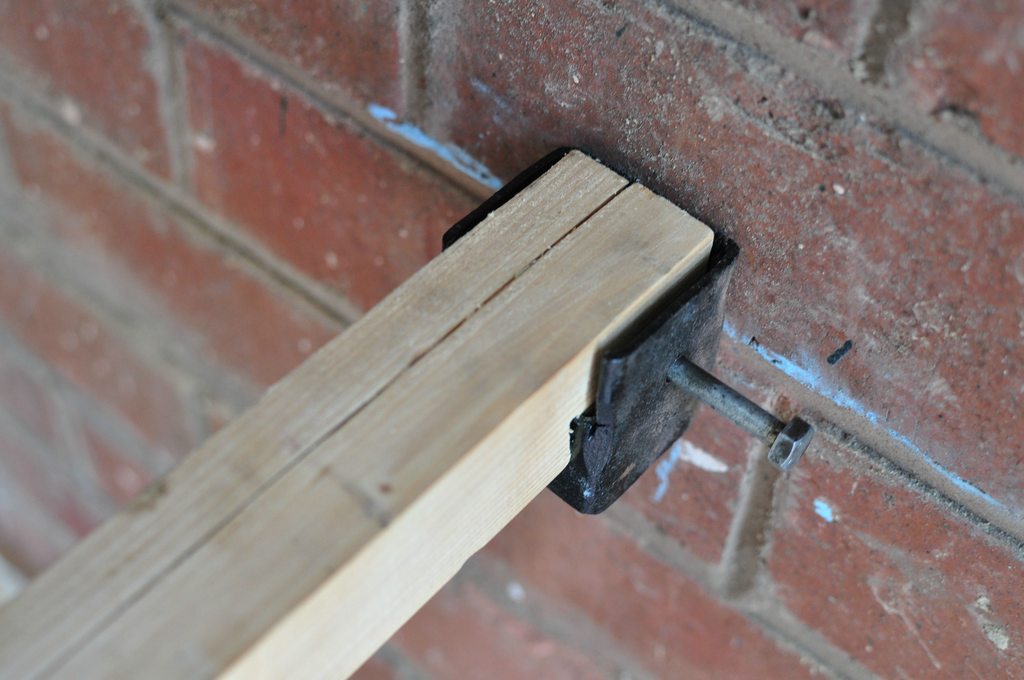When this thread started I had just ordered my first wood-plane on eBay; a Stanley number 5 Jack-plane
Just like the first poster I have only got an old folding table
To do woodwork I have to get my tools from shelves etc after taking the car out
I decided to strengthen the table with a spar connected to the garage wall
Metal bracket was cut by hand hack-saw from old 2 inch box section; spar from ancient scrap
It works very well, pushing away from the wall
The Stanley is great; planed this lump of Walnut easily






Just like the first poster I have only got an old folding table
To do woodwork I have to get my tools from shelves etc after taking the car out
I decided to strengthen the table with a spar connected to the garage wall
Metal bracket was cut by hand hack-saw from old 2 inch box section; spar from ancient scrap
It works very well, pushing away from the wall
The Stanley is great; planed this lump of Walnut easily






































